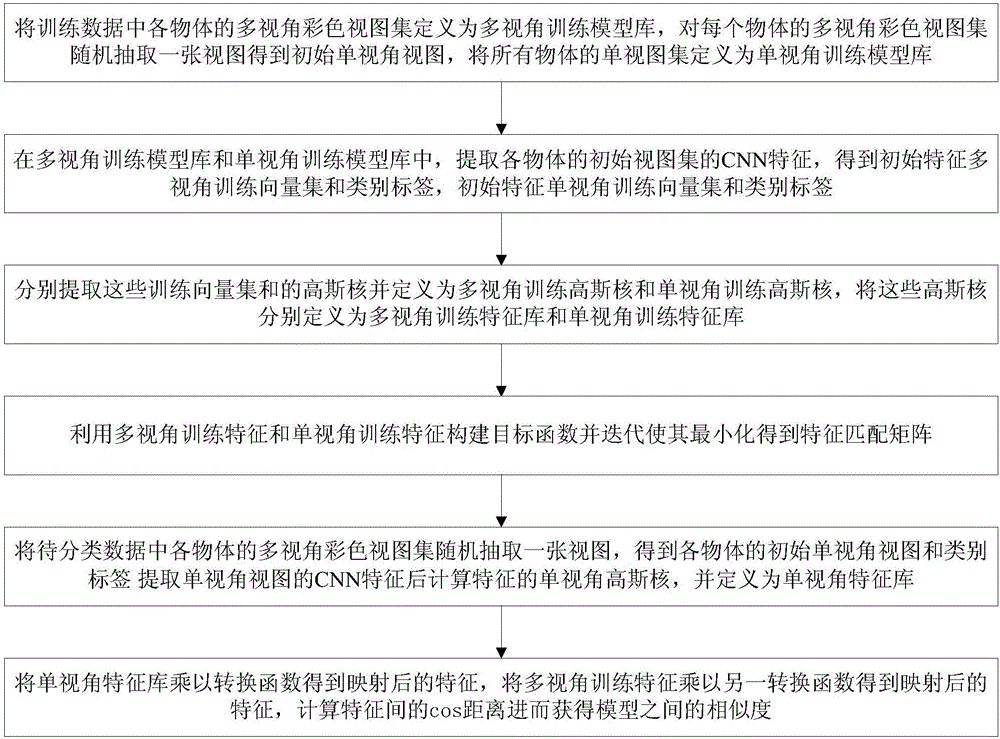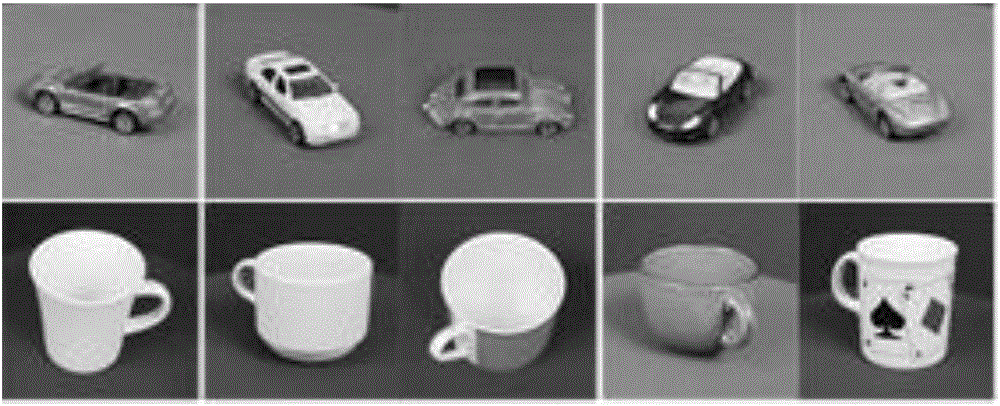Three-dimensional model classifying method based on feature matching
A three-dimensional model and classification method technology, applied in character and pattern recognition, special data processing applications, instruments, etc., can solve the problems of large workload of two-dimensional image classification, limited practical application scope, etc. Save time and effort, avoid the effect of multiple views
- Summary
- Abstract
- Description
- Claims
- Application Information
AI Technical Summary
Problems solved by technology
Method used
Image
Examples
Embodiment 2
[0055] The scheme in embodiment 1 is introduced in detail below in conjunction with specific calculation formulas and examples, see the following description for details:
[0056] 201: Define the multi-view color view set of each object in the training data as a multi-view training model library SD (SetDatabase), such as figure 2 As shown, a view is randomly selected from the multi-view color view set of each object to obtain an initial single-view view, and the single-view set of all objects is defined as a single-view training model library VD (View Database), such as image 3 shown;
[0057] 202: In the multi-view training model library and the single-view training model library, extract the CNN features of the initial view set of each object, and obtain the initial feature multi-view training vector set and category labels Initial Feature Single View Training Vector Set and category labels
[0058] Among them, the CNN feature, also known as the convolutional neur...
Embodiment 3
[0111] Combined with the specific experimental data, Figure 4 The scheme in embodiment 1 and 2 is carried out feasibility verification, see the following description for details:
[0112] The database used in this experiment is the database ETH published by Taiwan University of China [9] . This is a real-world multi-view model database, which contains a total of 80 objects in 8 categories, and each object has a total of 41 views. In this experiment, 24 objects of 3 types are selected as the training set, and the remaining objects are used as the set to be classified.
[0113] Several parameters are involved in this experiment: number of iterations, weight coefficient λ 1 ,λ 2 and the number of neighboring points k 1 , k 2 . In this experiment, the number of iterations is set to 10, and the weight coefficient λ 1 =0.9,λ 2 = 0.1 and the number of adjacent points k 1 = 2,k 2 =5. After classification, the category label of the 3D model is compared with its original ca...
PUM
 Login to View More
Login to View More Abstract
Description
Claims
Application Information
 Login to View More
Login to View More - Generate Ideas
- Intellectual Property
- Life Sciences
- Materials
- Tech Scout
- Unparalleled Data Quality
- Higher Quality Content
- 60% Fewer Hallucinations
Browse by: Latest US Patents, China's latest patents, Technical Efficacy Thesaurus, Application Domain, Technology Topic, Popular Technical Reports.
© 2025 PatSnap. All rights reserved.Legal|Privacy policy|Modern Slavery Act Transparency Statement|Sitemap|About US| Contact US: help@patsnap.com



